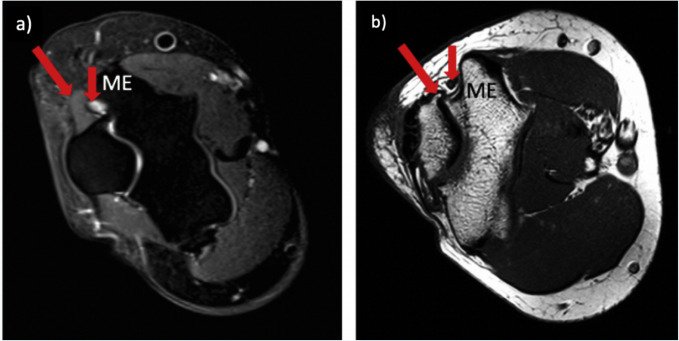Muscooskeletal & Neurosonography

Types of Musculoskeletal & Neurosonography
Shoulder ultrasound (rotator cuff, tendons)
Elbow ultrasound (tennis elbow, nerve compression)
Wrist & hand ultrasound (carpal tunnel, tendon injuries)
Hip & groin ultrasound (bursitis, muscle tears)
Knee ultrasound (meniscal injury, effusion, ligament tears)
Ankle & foot ultrasound (Achilles tendon, plantar fascia)
Peripheral nerve ultrasound (median nerve, ulnar nerve, radial nerve)
Infant cranial neurosonography (brain ultrasound in newborns)
Symptoms that May Require Musculoskeletal & Neurosonography
Persistent joint or muscle pain
Swelling or inflammation in joints
Limited range of motion
Numbness, tingling, or weakness in limbs
Suspected nerve entrapment or compression
Sports injuries or trauma
Lumps or soft tissue masses
What Are Some Common Uses of Musculoskeletal & Neurosonography?
Diagnosing tendon tears or inflammation (e.g., rotator cuff, Achilles)
Assessing muscle strains, sprains, and hematomas
Detecting joint effusions or synovitis
Guiding joint or soft tissue injections
Evaluating peripheral nerve compression (e.g., carpal tunnel syndrome)
Monitoring healing after injuries or surgery
Imaging soft tissue masses or cysts
How Do I Prepare for My Musculoskeletal & Neurosonograph
Most MSK and neurosonography exams require no special preparation. Wear loose, comfortable clothing so the area being examined is easily accessible. You may be asked to remove jewelry or watches near the site of the scan. For infant cranial scans, no preparation is typically needed.
What Will Happen During My Musculoskeletal & Neurosonography?
You will be positioned comfortably, often lying down or sitting, depending on the body part being examined. A small amount of ultrasound gel will be applied to the skin over the target area. The technologist or radiologist will move a handheld probe (transducer) over the skin to capture images. The procedure is painless, radiation-free, and usually takes 15–30 minutes. You may be asked to move the joint or muscle during the scan to assess function.
What Are the Reasons for a Musculoskeletal & Neurosonography?
Your doctor may recommend this procedure if you have:
Unexplained joint, muscle, or nerve pain
Suspected soft tissue injuries or tears
Signs of nerve compression or entrapment
Swelling, lumps, or unexplained masses
Poor healing or complications after an injury or surgery
Need for ultrasound-guided injections or procedures
Why is Musculoskeletal & Neurosonography Used?
Musculoskeletal & neurosonography offers real-time, dynamic imaging without radiation exposure, making it ideal for assessing movement, injuries, inflammation, and nerve issues. It is highly accurate, cost-effective, and safe for all ages—including children and pregnant women. The ability to evaluate joints, muscles, tendons, and nerves during motion provides valuable diagnostic insights that static imaging like X-rays or MRI may not capture.
